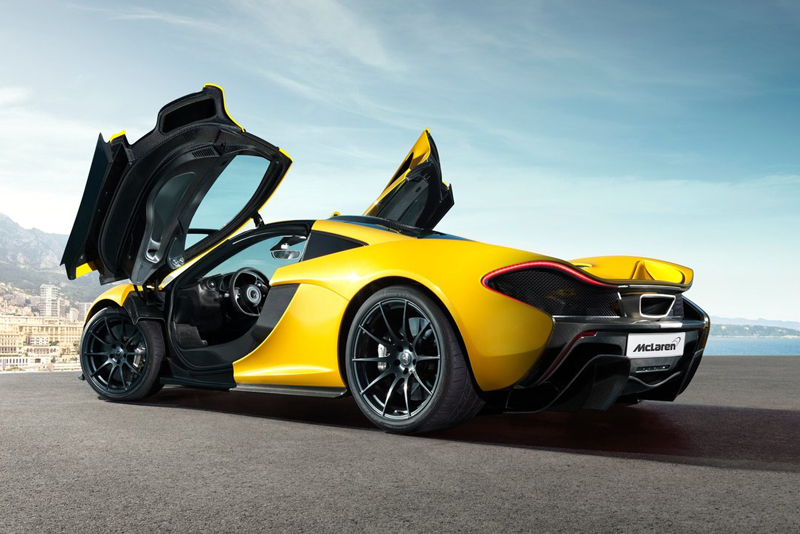Enter Britain's contender for the 2013 hypercar World Cup...
We’ve known about the McLaren P1 for quite some time, having been unveiled at the 2012 Paris motor show. Now though, after months of teasing, pictures and rumours, comes the long-awaited production version and its full performance figures, shown at the Geneva motor show alongside its daddy, the F1 LM.

What better way to celebrate the company’s 50th and the F1’s 20th birthdays than by unleashing a new all-conquering hypercar on the world? With McLaren’s vast Formula One experience and technology at its disposal, the P1 certainly has a shot at besting its chief rivals, the LaFerrari and Porsche 918 Spyder. It may not be the fastest in a straight line (the P1 gives away about 50 bhp and 2 sec to 300 km/h to the Ferrari), but then again, McLaren have said all along that their goal was to make the fastest road car round a circuit, not just a straight line.

To that end, most of the P1's performance capabilities come from the wind tunnel, where its form was almost entirely dictated by aerodynamics. There's a two-stage active rear wing with DRS (that can alter in pitch depending on speed and cornering loads, and act as an air brake), active suspension that lowers the car in Track mode by 50mm, creating a sort of ground effect, a massive and crazy looking diffuser and adjustable flaps ahead of the front wheels. Plus, the whole body of the car draws inspiration not only from the '90s F1 supercar, but also the MP4-23, the racer that took Lewis Hamilton to the Drivers' title in 2008. Made entirely out of carbonfibre, the body curves, dips, and flows to guide air either for downforce and cooling and is pared back and shaped to such extremes that it looks as if it was shrink-wrapped around all the mechanical components. Even the LED lights have been sculpted as much as possible to allow space for cooling, the rears especially, just a thin strip following the contours of the rear bodywork's trailing edges.

Like the 12C, the P1 also uses a hydraulic active suspension system that automatically adjusts stiffness and damping without the need for anti-roll bats. The 390 mm and 380 mm front and rear brake discs boast a mirror-like finish, and are made from a special NASA-grade carbon ceramic that is lighter and dissipates heat more efficiently, and the brake pads are developed by Akebono, the brakes supplier for the F1 team. Housing the brakes are lightweight 19 and 20-inch rims wrapped in Pirelli P Zero Corsas developed specifically for the P1. End result for all this techno-wizardry? 600kg of downforce at 260 km/h (5 times more than the 12C), and up to a mind-boggling 2G in the corners and braking,

Powering the P1 is a heavily reworked version of the 12C's 3.8 litre turbo V8 with a dry sump and larger turbochargers (and other tweaks), producing 727 bhp and 720 Nm of torque. Add to that an electric motor and batteries with KERS and 10km of electric-only range, and you're looking at a grand total of 903 bhp and 900Nm, which will propel it to 100 km/h in under 3 seconds and to 300 km/h in 17 seconds - 5 seconds faster than the seminal F1.

Impressed? Production is limited to 375 examples to ensure exclusivity, at a price of $1.64 million. Ron Dennis, head of McLaren, claims that in testing, the P1 has lapped the Nurburging in under 7 minutes, and smashed the Top Gear test track's current record by 10 seconds. If so, then the McLaren is an astonishing 4 seconds slower than a V10 F1 car. On road-legal tyres. Think Ferrari still has a chance?




